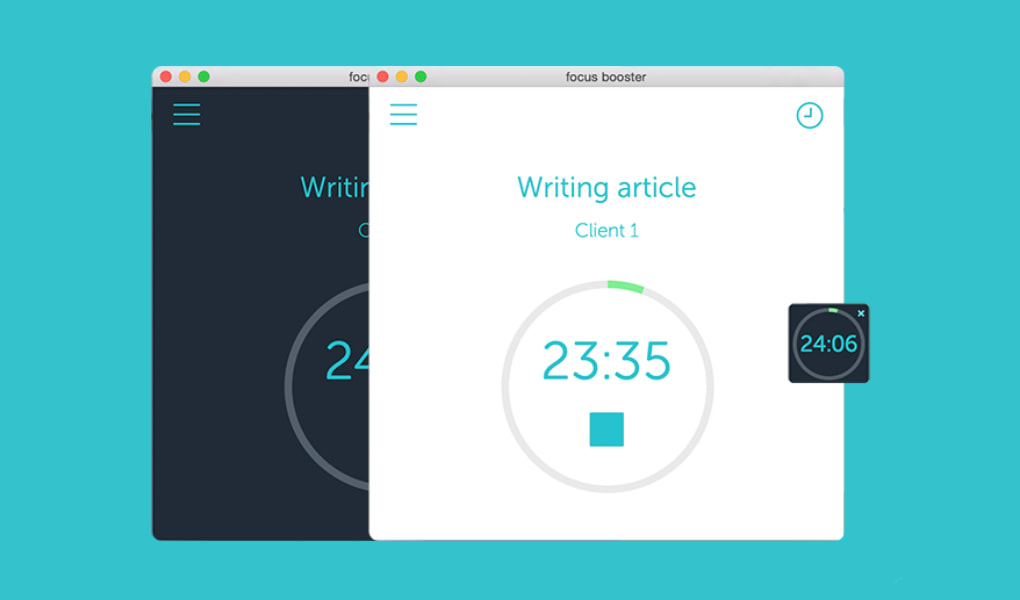Productivity has become a top priority for businesses and individuals recently with this performance metric getting more attention than ever before. There’s a boom in productivity software and philosophies, too, which is good in the sense that we’ve got plenty of tools on our side. However, the negative side of this is that there are a lot of sales pitches hidden among the genuine advice (assuming there is any, to begin with).
In this article, we’re not focusing on the tools but rather on the techniques and habitual changes that make a real difference in productivity. These are backed by science and geared towards the needs of modern digital workers and the unique challenges that come with working in this connected age.
Changing habits is the key to productivity
To maximise productivity, you have to change working habits and this is the most challenging aspect, especially when the workplace itself has formed these habits into you and everyone around you.
Changing the habits of one person isn’t enough; you have to reprogram the group think of an entire organisation to remove resistance to widespread change.
One of the biggest problems with modern work culture is the emphasis on being busy. The kind of thinking that, if you’ve completed your to-do list then you clearly don’t have enough on your workload – but where does this mentality end?
It doesn’t.
The productivity hacks we’re looking at in this article are habits that modern teams and workers need to form and a lot of these are going to require you, collectively as a team, to break some established working practices and retrain the way your mind operates in the workplace.
So let’s get started.
#1: Stop multitasking
The first thing you need to do before you can maximise productivity is to stop multitasking. This is one of those long-established habits of busy people who are desperate to save time by doing more than one thing at once or switching between tasks.
Sadly, multitasking is a false efficiency that ends up costing you more time than it saves. And, to make matters worse, studies have shown that multitasking has a wide range of negative impacts on the human mind.
“For nearly all people, in nearly all situations, multitasking is impossible. When we think we’re multitasking, most often we aren’t really doing two things at once – but instead, individual actions in rapid succession.” – Cleveland Clinic academic centre
Personally, I’ve always been a bit of a sucker for multitasking and thinking it’s going to save me time. But I can quite clearly see that it takes me longer to complete each task if I try to handle more than one thing at a time so my own experience backs up the countless studies that say multitasking doesn’t work.
Knowing this is one thing but changing the habit is something else and this is by far the toughest productivity habit I’ve had to crack. As soon as there’s a setback or time feels short, it’s easy to instinctively revert to multitasking, in a desperate bid to claw back time but it only makes matters worse.
To ditch multitasking for good, you’ll need the right team that understands it’s a false efficiency and the tools to help you focus on individual tasks.
#2: Set a single goal for each day
To forget about multitasking, you have to retrain your mind to concentrate on single tasks. This goes against everything our busy, digital lives encourage us to do but the solution to this problem also lies in the same digital tech that exacerbates it.
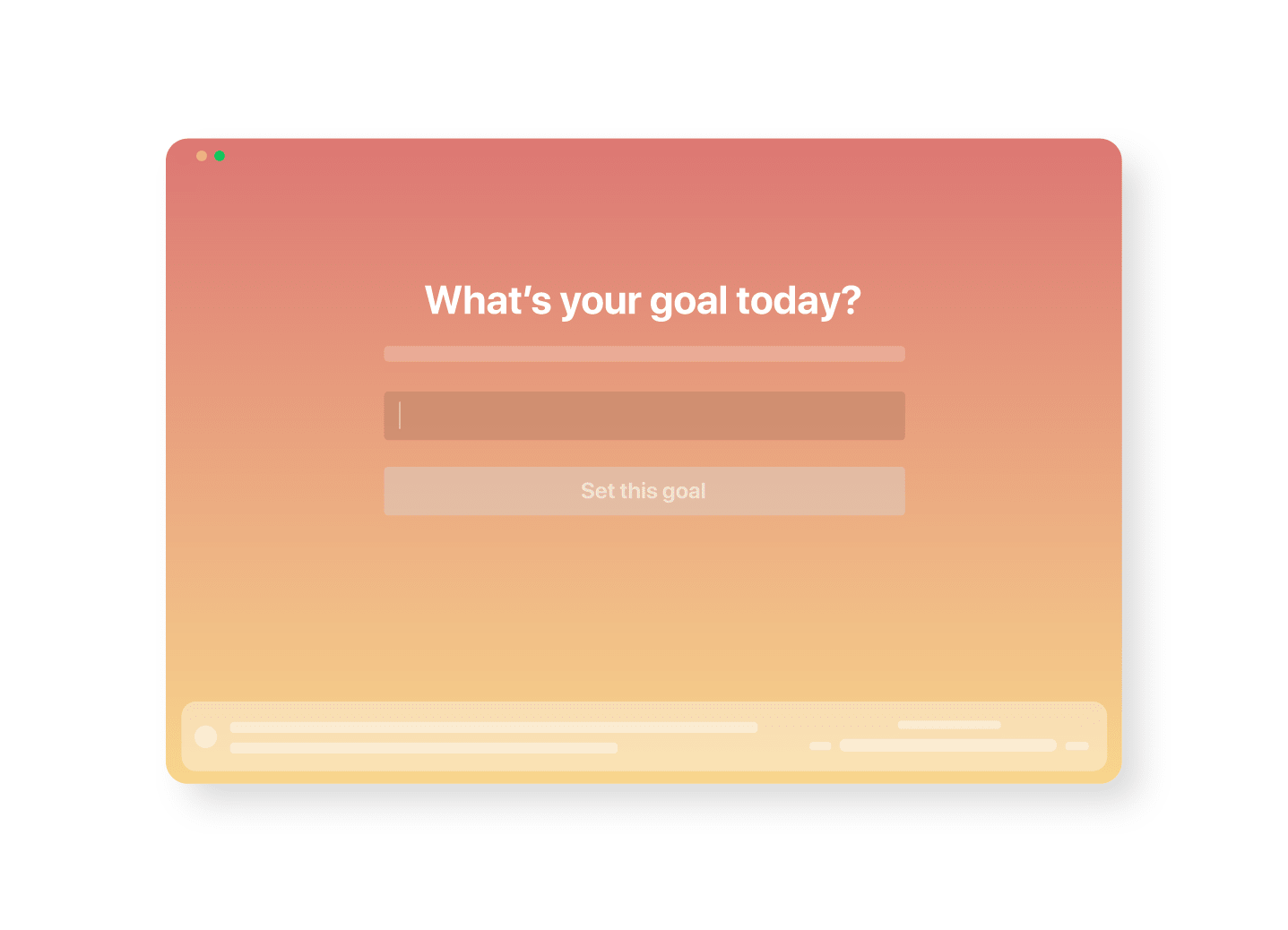
We use a productivity app called Serene to organise our workflow and keep us focused on the task at hand. The tools encourage you to set a single goal for each working day, which constantly reinforces the idea of focusing on individual tasks. You can break daily goals into multiple tasks or work sessions, where you’ll only work on that specific task (and nothing else) for the allocated time.
There’s no time left for multitasking.
#3: Work in short bursts
The human mind can only concentrate on the same task for so long although scientific studies haven’t been able to provide a conclusive number. Some studies have suggested people start to lose focus after 10-20 minutes while others are slightly more generous. Certain, more recent, studies point towards much shorter attention spans in the digital age.
Either way, an hour is a long time in terms of maintaining focus and this is why it makes sense to work in short bursts. One of the most popular productivity principles is the Pomodoro Technique, which involves working in 25-minute sessions followed by a five-minute break.
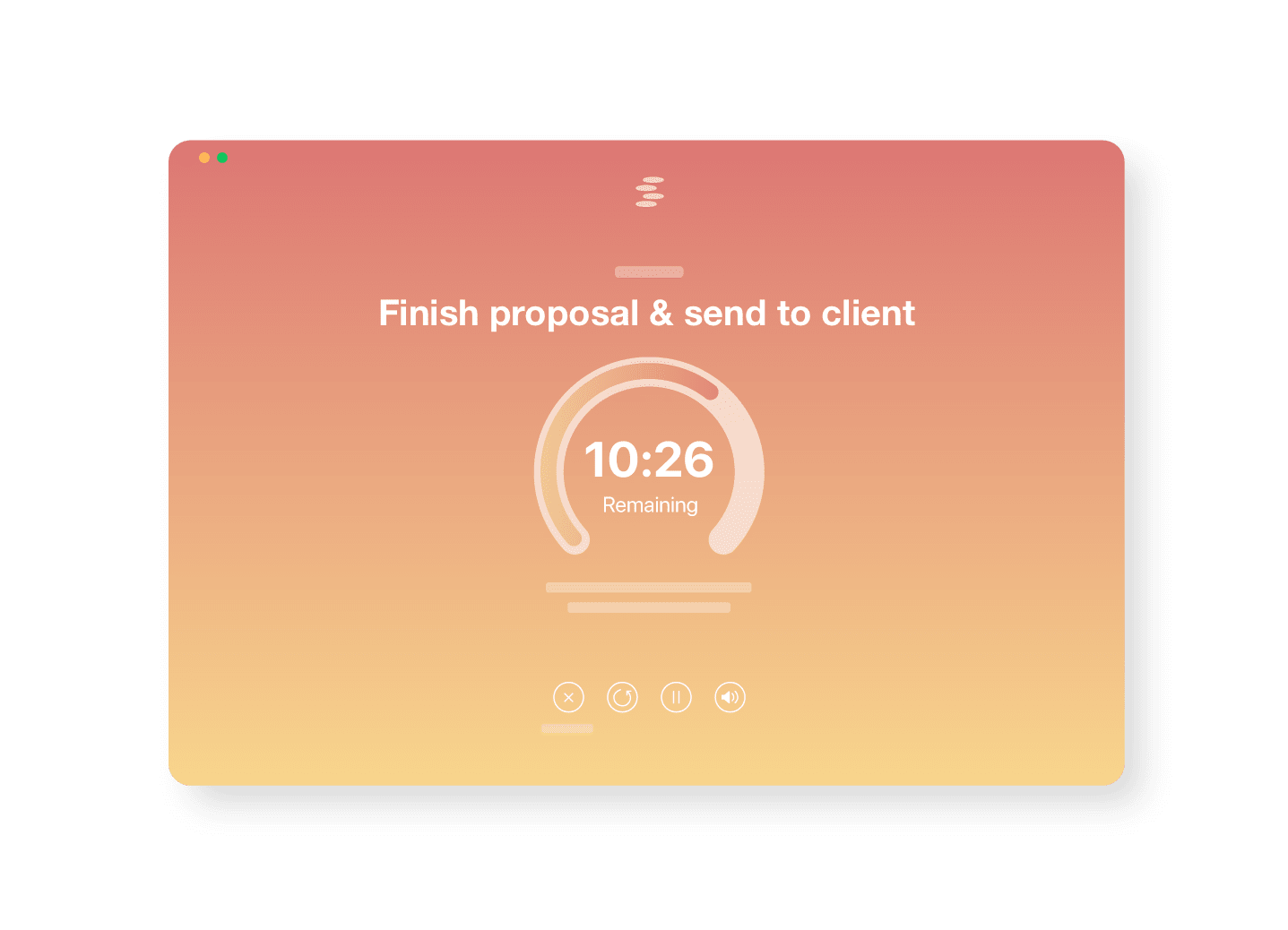
We do something very similar with Serene, which allows you to create working sessions between 20-60 minutes. So what I do is break my day into two-hour slots and then use the Pomodoro Technique to have two twenty-five minute sessions per hour, broken up by five-minute breaks. I sometimes also create 50-minute sessions and have a ten-minute break to make up the rest of the hour.
I find this makes it easier for me to organise my schedule and keeps me working towards competing tasks within 25 minutes.
#4:Take regular breaks
If you follow the Pomodoro Technique or a similar approach to working in short bursts, you’ll naturally find yourself taking regular breaks. This gives your mind a chance to recover from intense focus but you have to smart about how you spend your downtime.
Your instinct might be to open Twitter or Instagram but this digital onslaught of content doesn’t allow your mind to truly “switch off”.
To maximise the benefit of each break, it helps to avoid anything that’s mentally taxing in any kind of way. This is especially true for short breaks where you’re going to have to get back to work in a matter of minutes. For a five-minute break to actually count, you’re going to want to avoid anything that divides your attention, involves any decision-making or requires concentration.
Your mind is hard at work during each session and now you want to focus as little as possible. The best thing you could do is zone out completely and think of nothing or meditate to relax your mind and body. Another good option is to do some yoga or stretches while keeping your mind clear, giving yourself a cognitive break but also an important physical break from sitting down.
#5: Block distracting apps/websites
According to research carried out by RescueTime, the average digital worker can’t go more than 6 minutes without checking their email or instant messaging. The digital nature of our work and social lives leaves us constantly checking for notifications and this constant distraction hampers our ability to focus on tasks for even short periods of time.
This really has to change.
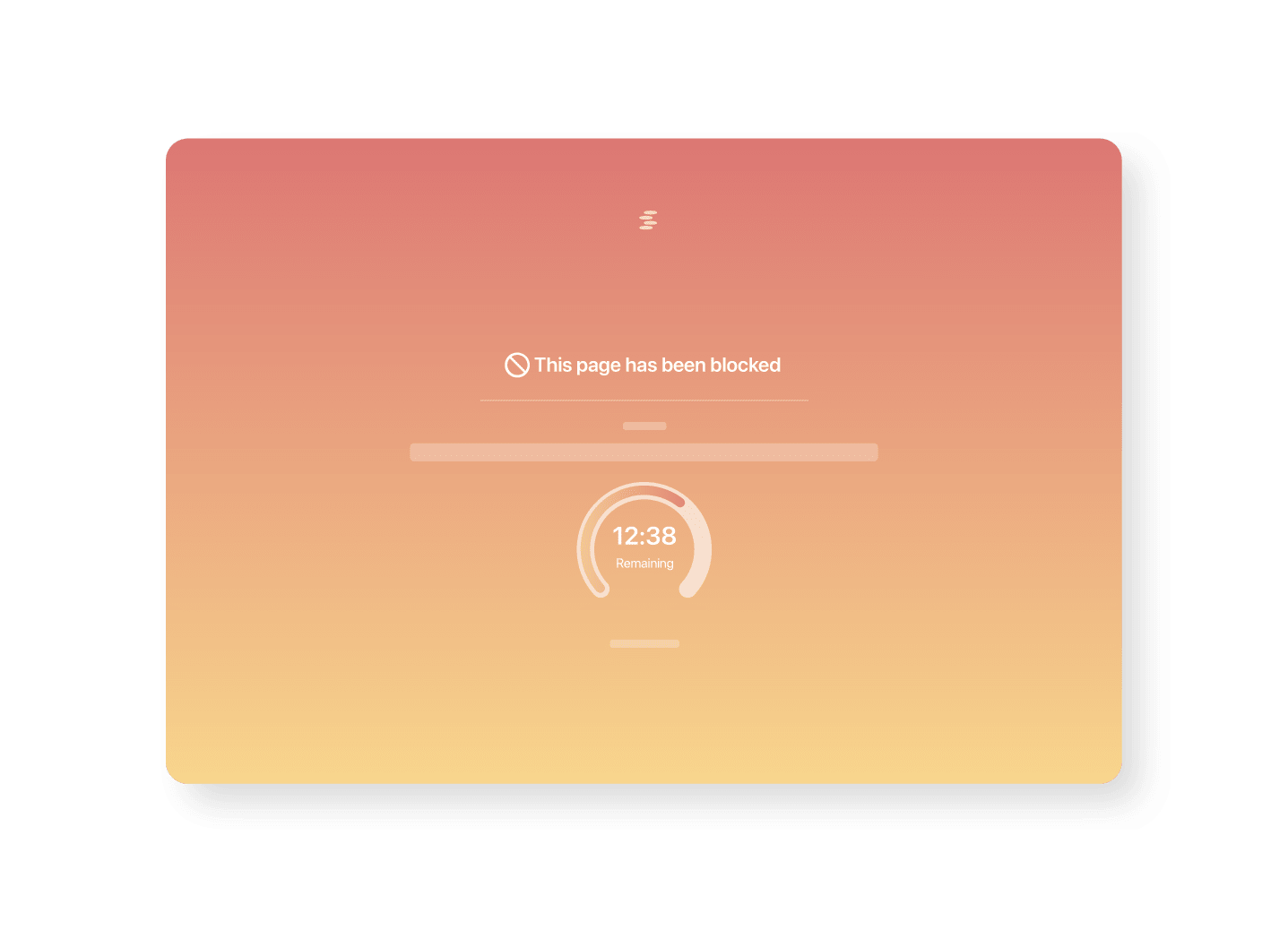
There are a number of website and app blocker tools on the market and this is one of the key features in Serene, too. You create a list of apps and website (you can block individual pages, too), which will automatically be blocked during work sessions. You can even prevent notifications coming through during work hours and they’ll automatically come in once the session has finished.
#6: Create a dedicated workspace
This one is crucial if you work from home or remotely. Don’t just sit on the couch or at the dinner table; create a dedicated workspace where you can go to work and then leave it once you’re done. I’ve spent a lot of my time working on the road and, for me, the best I could do was work in cafes or co-working spaces although I never really got on with co-working spaces, to be honest (don’t tell anyone).
If you’re working from home, take advantage of the space you have to create a home office dedicated for work and nothing else.
#7: Choose the right project/task management tools
I’ve mentioned Serene a few times already in this article but there are tonnes of productivity apps out there to help you get more done. The first thing you’re going to want is a good project/task management platform and, again, there are plenty of options available.
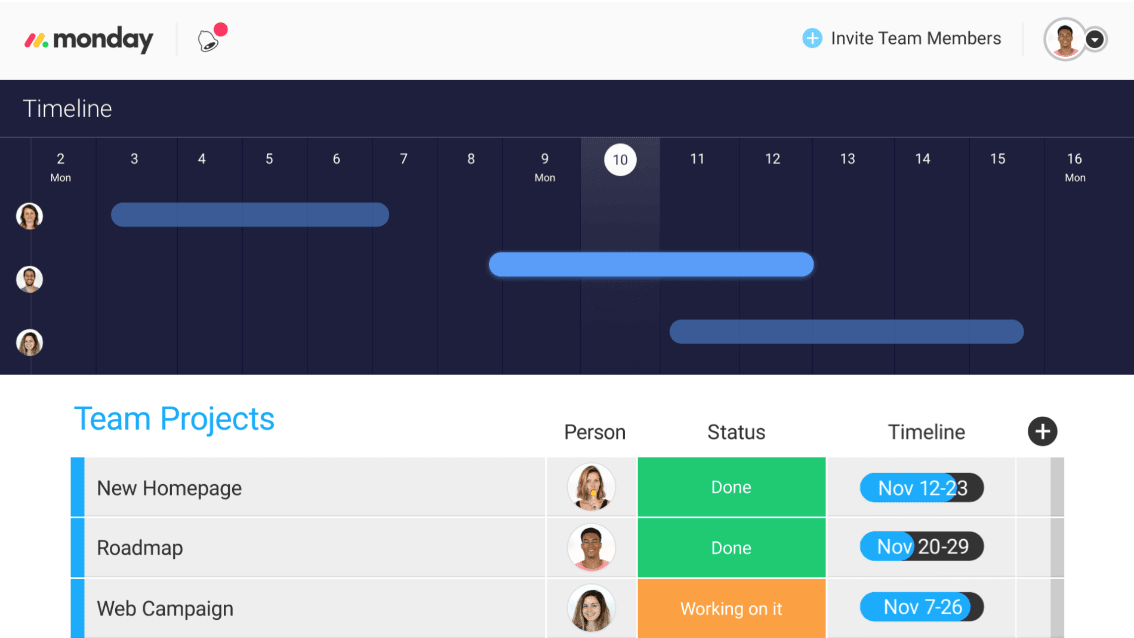
Trello, Monday and Asana are great options for project management platforms and there are dozens of task management tools like to-do list makers. You can see my list of recommendations in our 10 best to-do list apps and day planners article.
#8: Create shared goals within teams
Priyanka B.Carr and Gregory M.Walton published a study entitled Cues of working together fuel intrinsic motivation in 2014. Their findings reinforced the already-accepted idea that shared goals increase productivity and motivation within teams.
ScienceDirect hosts this joint study where it lists the highlights and key findings:
- A defining aspect of human society is that people work together toward common ends.
- Five experiments examined cues that evoke a psychological state of working together.
- As hypothesized, these cues increased intrinsic motivation as people worked alone.
- Outcomes were diverse, e.g., task persistence, enjoyment and, 1–2 weeks later, choice.
- These cues also increased feelings of working together but not other processes.
The answer here lies in creating a strong team spirit based around shared goals, achievements and rewards. To make this happen, you need the right project management platform that allows you to create shared goals, as well as collaborative and individual tasks.
#9: Choose the right collaboration tools
Collaboration tools help teams communicate more effectively and work together on joint tasks/projects. The tools your team is going to need depends on how you want to work together. For example, an in-house team may have relatively modest needs from collaboration tools whereas teams with remote workers will rely more heavily on them for even basic communications and group tasks.
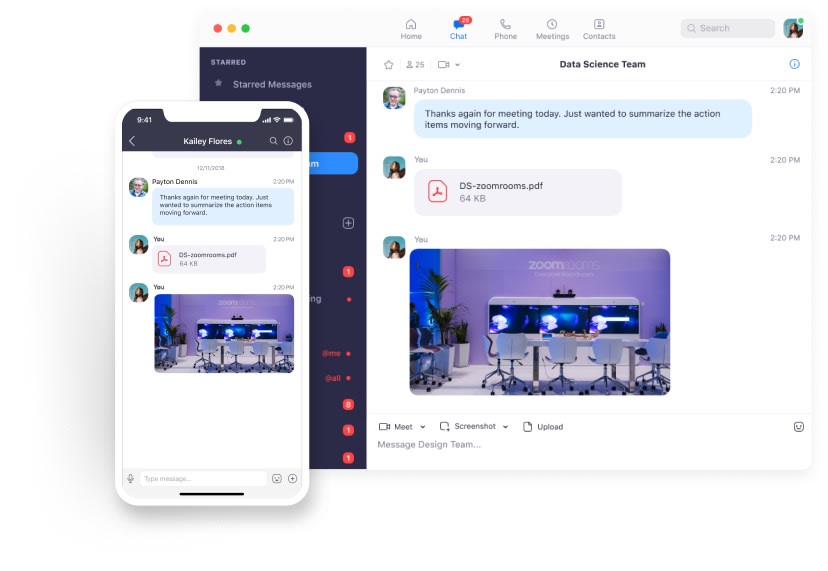
Slack is as good as any team communication tool on the market, turning instant messaging into a genuine productivity tool. For basic document sharing and collaboration, Google Drive may offer everything you need. While InVision is a powerful collaboration tool for design teams and Spark makes collaborative email a reality.
#10: Know when to work alone
Collaboration is constantly mentioned in productivity discussion but working together doesn’t always mean we get more done. There are plenty of studies that show collaboration isn’t always helpful for productivity but we shouldn’t need test groups to confirm this.
We know there are times when we’re better off working alone.
The key thing for teams is to know when collaboration is beneficial and when it’s time to work alone. Team managers also need to understand that some people respond better to working alone more than others – like more, for example.
This is one reason why I’m not a big fan of co-working spaces. It doesn’t mean they’re not beneficial to me in certain ways and I understand they’re more beneficial to many other people.
We’re all different and team managers need to strive to get the best out of individuals, as well as the collective.
#11: Know when to say “no”
This is one I still struggle with more than I would like. I’m getting better at saying “no” to clients but it almost pains me to say I can’t do something for them. The problem is, taking on too much on compromises the quality of the work I’ll be able to deliver -not only for the client in question, but my other clients as well.
So I really have to force myself to say “no” when it’s not realistic to take more on.
I’m at a point now where I’m finally refusing to work at weekends or work in the evenings. None of my clients push me to take too much on and they’re always very accommodating with arranging alternative deadlines (as am I) but all of this pressure comes from me, nobody else.
It’s a counterproductive pressure though.
By learning to say “no” and maximising productivity in other areas, I’m naturally able to do more for my clients than I would if I kept agreeing to take everything on. Crucially, I feel justified in saying “no” when I need to because I know it’s what is best for me and my clients. I also know I’m already close to achieving maximum productivity and taking too much on will only ruin the balance I’ve found.
This problem is solved by simply changing my way of thinking and this is actually the key step with most productivity hacks. The tools and techniques will help but you really have to change yourself and your way of thinking to break old habits and achieve a higher level of productivity.
#12: Prevent interruptions
Earlier, we talked about digital workers constantly checking apps and research has shown how long it can take us to recover from such distractions – up to 25 minutes, according to some studies. Notifications are a real issue here and the constant barrage of emails and IMs is a major productivity killer that teams often fail to address.
Working in short bursts will help you maximise productivity but this isn’t going to happen if you’re constantly being interrupted by colleagues.
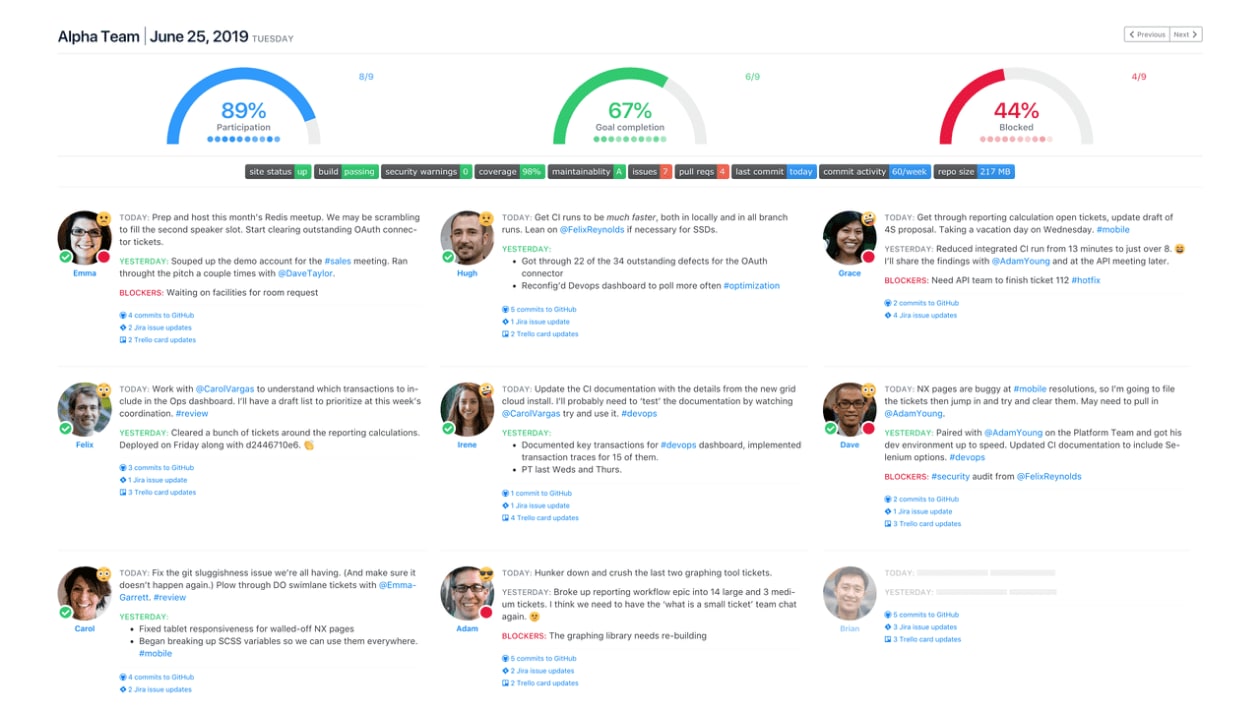
The answer is pretty simple: block the notifications during work sessions and use availability statuses in tools like Slack or Status Hero so everyone can see who is busy and avoid interruptions.
#13: Track tasks but let people crack on
Another great feature of Status Hero is that team members quickly provide a status update to say what they’re working on and they can also list “blockers” which are issues preventing them from completing specific tasks.
This means everyone on the team can see what people are currently working on and understand why certain tasks may not have been completed yet. This context, along with availability statuses, not only helps prevent unnecessary interruptions but also saves a bunch of time on pointless messages like “are you busy,” “have you done [task] yet?” etc.
#14: Tame your email inbox
Email remains one of the most powerful communication platforms for businesses and teams, connecting you with the outside world (wide web). However, it’s also a major drag on productivity when it comes to notifications or creating messages that need input from multiple departments/people.

Spark basically solves all of these problems with its intelligent email client that prevents your inbox from being a liability. Its Smart Inbox automatically categorises your emails from every account assigned to it, allowing you to filter out the emails that don’t matter and prioritise the ones that do.
You can also snooze specific emails for later, assign emails to team members, chat with team members, share drafts, set reminders for follow-ups and schedule emails to send them later.
With Spark, multiple team members can even work on the same email at the same time while communicating via instant messaging on the platform. This means there are no more emails to clients, saying “I’ve CC’d James and he’ll explain that technical issue we talked about earlier”.
All the key details can be included in emails by the right person without any confusion or inaccuracy.
#15: Use a scheduling app for meetings
Organising meetings and group work sessions can be a nightmare for digital teams. If you’ve got a bunch of remote workers in your team, this task is made even more difficult and worse still if you’ve got team members spread out across different time zones.
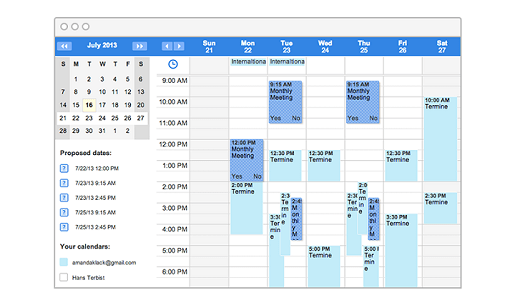
The good news is there are scheduling apps that can take out the endless email back-and-forths. Doodle is one of these apps but it’s by no means the only option you’ve got for this task.
#16: Make meetings productive
When you do have meetings, make sure they’re also productive. A common problem I’ve experienced as a remote worker is being part of teams that seem to have meetings every week for the sake of it with the same people attending when they don’t really need to be there.
In the majority of cases, I’ve signed out of digital meetings thinking I didn’t really achieve enough to justify a 30-minute group chat rather than a few instant messages.
The meetings I’ve found to be most productive are the ones where we’ve used the time to discuss and solve problems that are getting in the way of progress. This is where group ideas can really shine.
Sadly, I’ve spent too much time in “meetings” listening to people talk about what they have done/will do when I don’t really need to hear that information unless I’m the team manager.
#17: Schedule notifications
You may have noticed I’m not a big fan of notifications but this comes from knowing how much of a distraction they have been to me in the past.
When I first started working remotely, I told every client that “I’m only an email away” and prided myself on responding to emails almost instantly.
In principle, I still like the idea but, in practice, it simply isn’t workable.
Every time I allow a notification to interrupt my workflow, I’m letting it interrupt the work I’m doing for another client. The best thing for everyone (myself included) is that I focus on the task at hand, do it to the best of my ability and address other things when the time comes.
So now I block communications apps during my Serene sessions and address notifications during the two hour-long breaks I take (20 minutes for admin tasks and 40 minutes for actual break time).
#18: Switch off after work
For me, this is one of the hardest parts about being a remote worker and a freelancer, in general.
I’m not alone, either.
According to Buffer’s State of Remote Work report, switching off after work is the hardest part about working remotely/from home.
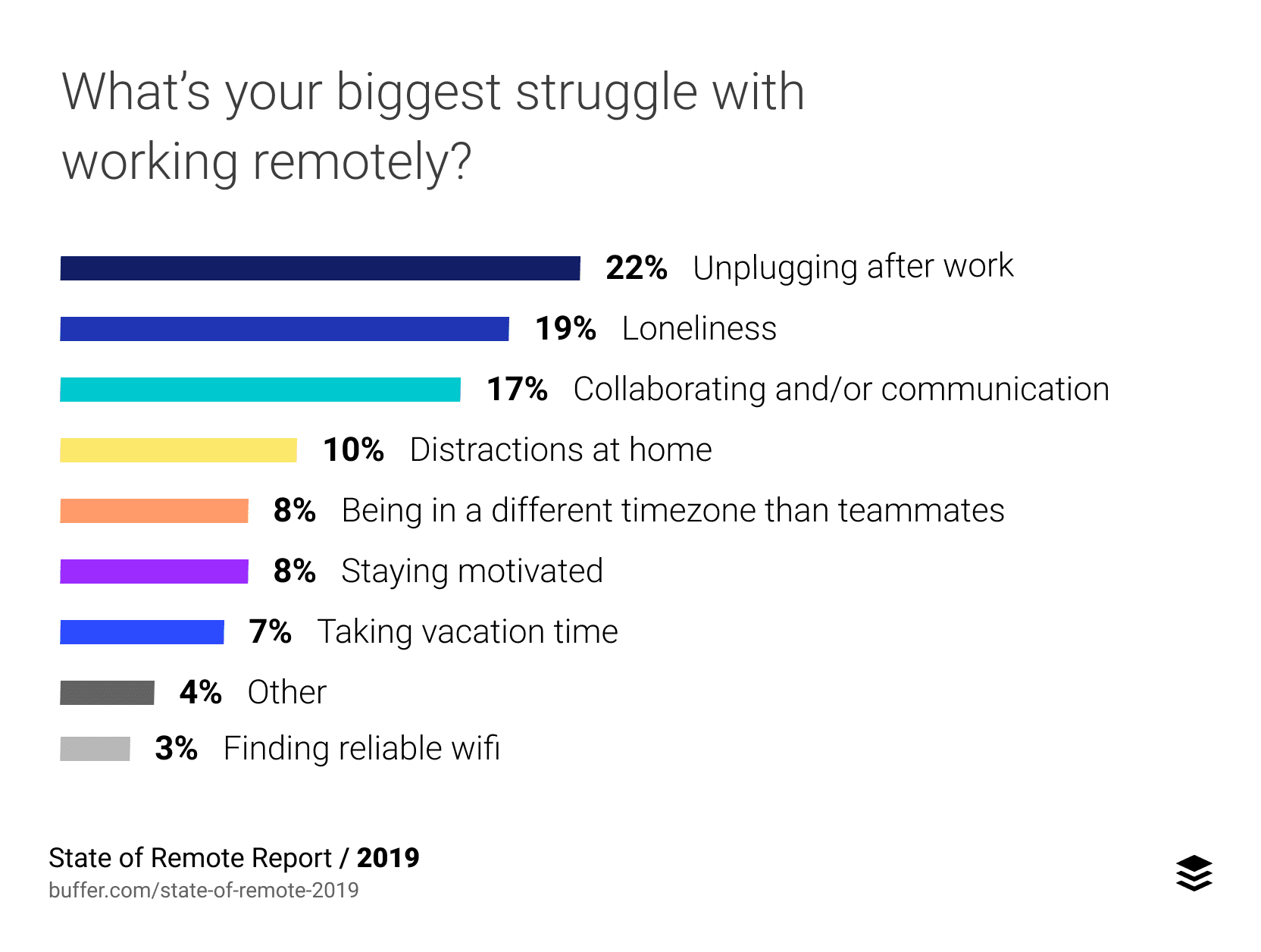
For me, this comes back to knowing when to say “no”. It’s a personal battle that has more to do with you than your clients, team or employer (if it’s not, then they have a major problem).
The easy answer for me was to schedule notifications so I don’t see them outside of working hours. I make it clear to each client when I’m available and Tool blocks notifications until 8am, Monday-Friday.
I do this with a tool called Daywise.
#19: Don’t get bogged down in too much tech
We’ve looked at a lot of software tools in this article that will help you boost productivity and there are plenty of other great tools out there. That said, I should point out an inherent danger in becoming overly dependent on software. Or, more to the point, the wrong type of software or too much of it.
Use the tools you need but make sure they are actually improving your productivity. You don’t want to spend five hours every week looking at analytics on your productivity performance if the tools are only saving you three hours, for example.
Make this year more productive
While we’ve looked at quite a few software tools in this article, the emphasis here is on forming productive habits and simply choosing the tools that will help you focus on achieving your targets. To become more productive, you have to be willing to change the way you think about organising and completing tasks, but you’re also going to need the right kind of team (with the right kind of mentality) to nurture a truly productive working relationship.
So hack your thinking with the 19 points we’ve looked at in this article and make this your most productive year yet,


